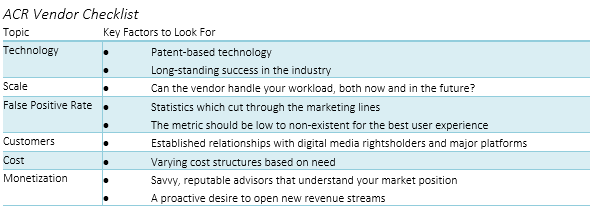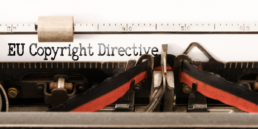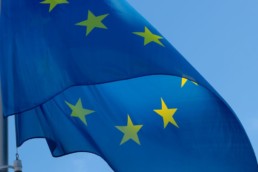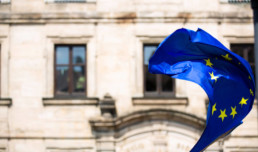The EU Copyright Directive Went Into Effect on June 7, 2021 — Are You Ready?
EU member states were given until June 7, 2021, to transpose the EU Copyright Directive into national legislation. This law affects most online content sharing service providers, including social media platforms, that make available, organize and promote for profit-making purposes copyrighted content uploaded by users. Despite the pandemic slowing the process, several states, including Germany, France, Hungary, and the Netherlands, have completed transposing or adopting the directive into their country’s law. Other countries are not far behind, but the reality is that platforms need to comply on June 7th.
The UK, having left the EU, will not be implementing the directive.
What are the Key Things You Need to Know?
The two main provisions of the directive for platforms include:
- Obtaining licenses for content on their sites
- Preventing the availability of unauthorized content
Other provisions include setting up a user appeals process and preventing reuploads of previously notified content.
Does the Directive Impact All Providers?
The Directive specified that certain platforms were exempt from these obligations. First, non-profits in defined areas such as online encyclopedias and scientific repositories, like Wikipedia and Archive.org, are excluded. Second, small companies will not need to prevent unauthorized content but must still respond to takedown notices and pursue licensing. Courts will apply the principle of proportionality in assessing whether a service provider has complied with its obligations based on the type of service, size, audience, type of works, and availability of suitable and effective measures. Finally, platforms that are not providing access or now chose to block access to those who live in the EU will not have to conform to the directive.
Rightsholders’ Obligations
Rightsholders also have obligations. For example, they must provide relevant and necessary information to enable a platform to identify content that cannot be made available on their site. This is key. If this information is not provided directly or through a vendor such as Audible Magic, the platform’s only obligations are to respond to takedown notices.
We recommend you consult with appropriate legal counsel as you implement provisions to meet the Directive.
How to Move Forward
Audible Magic is here to help service providers with meeting the new legislation by offering services to:
Use our identification services for audio and video to help prevent hosting unauthorized copyrighted content
- Identify unauthorized or authorized copyrighted content.
- Implement stay-down measures for unauthorized copyrighted content.
- Track activity for reporting purposes.
Access and Manage Licenses
Audible Magic offers sub-licenses for music or, where possible, helps facilitate obtaining licenses directly from a rightsholder. In addition, we offer proven services to ingest and clear catalogs and perform royalty reporting and payments.
Learn More about the Copyright Directive
- Take our A17 Assessment Survey
- Read the EU Copyright Directive
- Learn more about the Copyright Directive by visiting our resource page
Are EU Member States Making Progress with Article 17?
With the June 7th, 2021 deadline looming for EU Member States to implement the 2019 EU Copyright Directive, many wonder about the timing of individual country transpositions or if there will be delays. The transposition is a process whereby each member state passes legislation to give force to the directive in that country. Although Covid-19 slowed progress, all major EU countries are making headway in their transposition process and are expected to meet the June deadline. The one significant exception is the UK, no longer part of the EU because of Brexit. The government has said it will not be implementing the directive.
To ensure the benefit of the new safe harbor provisions, online content-sharing services that make copyright works, such as music, publicly available in user-generated content will need to understand how and when the law is transposed by each member state. For example, The Netherlands has completed the transposition of the law and has specified that it will go into effect as of June 7, 2021.
We are watching this process carefully since some countries have considered adopting additional or different implementation measures in their transpositions. This could cause service providers to have a requirement to adjust their plans for each country they stream content to.
To learn more about how Article 17 will impact your business, we have included more resources at the end of this summary.
The Netherlands
The Netherlands became the first EU member state to implement the directive on December 28th. Their implementation is mostly a literal transposition of the directive’s provisions, but it also includes a provision that allows the Ministry of Justice to provide further rules on the application of the Article 17 implementation.
Germany
On February 3rd, Germany’s government approved their latest proposal, which was revised in response to feedback from rightsholders and platforms. This draft states that without a corresponding license, platforms must block uploaded copyrighted content; however, short excerpts are presumed permitted by law and may not be blocked by automatic means. The law is scheduled to be debated in the legislature in March.
Austria
The Austrian Ministry of Justice completed the first proposal in December, which borrows elements from previous German proposals, including a direct remuneration right for creators, users’ ability to pre-flag uploads as legitimate, and a threshold that protects minor uses from automated blocking.
France
France passed an authorization law on November 18th, allowing them to implement provisions of the directive by administrative decree. This law specified that the decree implementing Article 17 must be issued 6 months from its passing, which would be April 18th. France's draft law proposes a literal adaptation of Article 17.
Finland
Finland’s proposal relies on the mandatory use of ACR (Automated Content Recognition) technology by platforms. Rightsholders would be required to review infringing uploads before issuing a blocking request, and users would be able to challenge blocks through an independent alternative dispute resolution mechanism.
Denmark
Denmark announced that it would implement Articles 15 and 17 during the parliamentary year and the rest of the directive after the summer. Like the Netherlands, the Denmark transposition is a literal adaptation of the EU Copyright Directive.
The UK Copyright and Creative Economy Centre, based at the University of Glasgow, maintains possibly the most comprehensive and up-to-date resource on national implementation at https://www.create.ac.uk/cdsm-implementation-resource-page/.
Check back for more updates on Article 17 in the coming months. The following resources will help you understand how Article 17 may impact your business.
- What is Article 17?
- Take our A17 assessment to see how Article 17 affects your business.
- Understand how small social networks are impacted by the copyright directive.
This blog is issued for informational purposes only and is not intended to be construed or used as general legal advice. Please contact the author(s) or your Audible Magic Corporation contact if you have questions regarding the currency of this information.
All information is accurate as of March 8, 2021
Sources
https://www.twobirds.com/en/in-focus/copyright-directive
http://www.xinhuanet.com/english/2021-02/04/c_139719400.htm
How Will Article 17 Impact Small Social Networks Outside the EU?
Article 17 also impacts small social networks outside the EU
Understanding your obligations
With the passing of Article 17 of the EU Copyright Directive in 2019, companies hosting copyrighted audio and video like social networks need to understand how this directive impacts their business. Although enacted in the EU, online content sharing service providers (OCSSPs) located outside of the EU will feel the effects of this legislation. Large and small companies need to understand the requirements. They differ slightly depending on your company. For example, the technical measures are not as demanding for smaller companies.
Are you considered an OCSSP?
OCSSPs are defined as follows by the directive:
“A provider of an information society service of which the main or one of the main purposes is to store and give the public access to a large amount of copyright-protected works or other protected subject-matter uploaded by its users, which it organizes and promotes for profit-making purposes.”
Platforms that are hosting content whether audio or video that includes copyrighted material need to comply.
Define small?
The directive defines small companies as:
- Service available in EU < 3 years, and
- Revenue < €10 million in the last calendar year, and
- <5 million unique monthly users on average over the last calendar year
Article 17’s international reach
Article 17 covers not only OCSSPs located in the EU, but any platforms that can be accessed by users in the EU. In this sense, Article 17 has a similar reach as the General Data Protection Regulation (GDPR) recently implemented in Europe, prompting companies outside of Europe to comply.
The intentions of Article 17
Simply put, the legislation is designed to stimulate a fair and open marketplace for the protection and licensing of copyrighted material between OCSSPs and rightsholders.
The goals of the legislation included: “contribute to the functioning of the internal market, provide for a high level of protection for rightsholders, facilitate the clearance of rights, and create a framework in which the exploitation of works and other protected subject-matter can take place.”
Most platforms will need to put in place measures to prevent unauthorized uses, such as Automatic Content Recognition (ACR) services to manage the compliance, licensing and monetization of user-uploaded audio and video.
All platforms are still required to meet existing law requirements, such as a Notice and Takedown system, along with policies to manage repeat copyright infringement required under US law.
So, what does this mean for small OCSSPs?
Small companies are given time to develop before they are expected to implement more advanced automation features such as ACR, but they will still need to comply with Takedown/Stay Down provisions. Once they grow past the definition of a small OCSSP, companies will need to use ACR services to meet the requirements of the directive.
Disclaimer: The information we provide should not be considered legal advice. While we work to be sure our information is accurate and useful; we recommend you consult an attorney.
Plan Now
It is important to start planning now on how to meet the requirements and understand the impact of the Directive on your business.
Below are some resources to help you understand the Directive and how it may impact your business.
- Take our A17 Assessment Survey for platforms to assess if the Directive affects your company and then assess your readiness to comply
- Learn more about the impact of the EU Copyright Directive on live streaming platforms
- Read the full text of the Directive
- And more is available on our Article 17 page as well as in our blog section
AM's CEO Vance Ikezoye Talks About Current Practices at the EU Copyright Stakeholder Meeting
December 16, 2019
Introduction
My name is Vance Ikezoye. I am co-founder and CEO of Audible Magic. With me is Mike Edwards, General Manager and Vice President for the EMEA region. We would like to thank the Commission for this opportunity to speak.
For the purposes of this presentation, we would like permission to use the term “Platform” to represent the Online Content-Sharing Service Providers (OCSSP).
Audible Magic is a technology company that was founded in 1999. Over the past decade, we have been one of the leading providers of copyright identification services to these platforms.
Business Roles and Policies
I would like to share an overview of how we work with Platforms and the Content Industry. Our customer, the party that pays for our services, are the Platforms. The Rightsholders have and must take affirmative action to register their repertoire into our systems. We do not charge Rightsholders for works registration.
Usage and match data are confidential information of the Platform. Any release of that information requires explicit approval by the Platforms. However, our current agreements generally allow us to provide limited information to Rightsholders about the services used by each Platform.
Since the Platforms pay, they have discretion as to what services they use and what content they process.
This arrangement has been working well in practice for over a decade. We believe that most of our customers and rightsholders act in good faith and are trying to do the right thing for all involved, including the consumer.
The Technology
Our service uses a fingerprinting technology which we have developed and continue to enhance. A fingerprinting technology matches content based upon perceptual characteristics of the content itself. It doesn’t rely on metadata or embedded marks. The technology can differentiate between live and studio versions of the same song. We provide services for identifying music and film/video content.
Audible Magic’s scientists were among the early pioneers of audio fingerprinting and obtained many of the first patents in the field. We continue to invest and enhance the technology to keep up with the rapid changes in digital media. We have also been granted an extensive portfolio of patents which provides our customers peace of mind from any threat of litigation for patent infringement. Uniquely, we indemnify our customers against any claims for patent infringement arising from the use of our technology.
Works Registration
We have over 140,000 rightsholders’ content registered in our program across music and film/video. We receive on average 300,000 new works per month. This content comes from over 140 countries. We have a range of rightsholders from major record labels and Hollywood studios with millions of works, to independent singer/songwriters with five tracks. There are no restrictions. Any bona fide copyright owner may register their works with Audible Magic. Most of these registrations are provided to us prior to commercial release or broadcast.
The Registration Process is very straightforward. Rightsholders contact AM; many times they are referred to us by our platform customers. They first sign a simple 2-page registration agreement. We do not charge rightsholders for registration of their works.
Rightsholders then either provide digital or physical copies of their works or we provide them tools to fingerprint the content themselves. They provide us basic information about each copyrighted work, including song titles, artist names, record labels, show titles, season and episode numbers. In addition, for each title, they supply us their designated business rule, such as allow, block, or monetize. We can also support duration-based rules, which for example can enable content under a specified duration to be allowed.
We can manage these rules by Platform. Thus, the same work could be blocked at one platform and allowed for use on another. We ingest the fingerprints, metadata, and business rules into our services. This metadata provides the basis for the information communicated to the Platform when a match occurs. This information is then ingested into our identification system.
Many right holders use third party service providers to register their content with Audible Magic and with other service providers. We strongly support moves by organizations such as ALPA to set up a one-stop-shops to enable their members to effortlessly register with multiple content recognition services including Audible Magic, Facebook, YouTube ContentID and INA.
The Identification Service for Platforms
We work with Platforms to implement our service. Platforms deploy a simple piece of software at the point of ingest after upload by the consumer. This integration is very easy, and the programming required is measured in minutes or hours (at most). This software processes the unknown media and generates the data needed to identify the work. This data is sent to our services via the internet. There is no information about the consumer that is used or transmitted to us. Each identification request is processed in less than a second and the service returns the metadata and business rules associated with the matched work back to the Platform.
There are various configurations of the identification technology which are optimized for each platform and their specific use case. We try to balance the thoroughness of the analysis against the cost of the service. In general, the current technology standards that our customers utilize is the unknown content contains 20 contiguous seconds matched to the registered copyrighted content for longer form content, and 5-10 contiguous seconds for short form content.
Every month we process over 3-billion identification requests per month from our customers. At peak, we can process over 8,000 requests per second. These volumes demonstrate the scale of user generated content on social video platforms.
With regards to Staydown capabilities, we have been providing that service since 2008, however most of our Customers have not implemented this feature.
Our customers are diverse. Platforms take the form of websites and mobile applications. Our customers range from some of the largest platforms in the world to small platforms in Africa and Southeast Asia. We have platforms that handle hundreds of files a month and platforms that do thousands per second.
The customers range in technical capabilities. We have small platforms with the CEO acting as the software programmer to major platforms with teams of engineers and lawyers. We have platforms that utilize the ad-support monetization model and those that are subscription-based. As a general rule, most of our platforms do not broadly monetize their UGC videos.
Legitimate Technical Issues
In the course of these Commission Dialogue meetings, there have been a number of issues discussed by the various Stakeholders. Many of these issues are legitimate and worthy of continued discussion. We’d like to briefly comment on some of them:
False Positives and Over-Blocking
The use of an identification technology is the only practical method of dealing with the volume of user content being generated. Since this is an automated process, accuracy is perhaps one of the most important requirements for an identification technology. All technologies are not alike. My co-founder used to say that it is very easy to invent a bad technology. And the reality is that technologies can be optimized for one attribute at the expense of others.
We believe that incorrectly identifying a work, a false positive, is a critical error and therefore ensuring misidentifications are essentially zero is the single most important objective for a production technology. We believe false identifications lead to over-blocking, attributing rights to the wrong content, or platforms having to manually review results.
One example of where false positive problems can occur is with measuring too short a duration of content. Trying to use fingerprinting technology to match one or two seconds of audio is like trying to match two compositions based upon two musical notes.
Copyright Exceptions
Copyright exceptions require a high degree of intellectual judgement and an understanding and appreciation of context. We do not represent that any technology can solve this problem in an automated fashion. Ultimately, these types of determinations must be handled by human judgement. However, identification technologies can supply data which can be used to enable more informed copyright exception analysis.
We fully support the call by many of the organizations representing consumer rights for transparent, accessible, and speedy appeal processes, administered by humans as the optimum way of addressing the issue. We also want to recognize that several of our customers have described in their presentations during these proceedings their redress mechanisms. It is probably because of these redress mechanisms that, in the more than 12 years we have been providing content recognition services to some of the world’s largest platforms, that we have not become aware of any serious or systematic issues in this area.
High Industry Standards
There has been much discussion with respect to the High Industry Standards language of the Directive. We believe that a copyright identification service which meets this bar must have at least the following attributes: First, service must be representative of global content. The service must be accessible and supported by a critical mass of rightholders, who have affirmatively registered their content. And it must be a turnkey and affordable solution for the range of platforms. We believe there are a number of commercially available content recognition services for the music and film/video industries that meet these criteria. Although this is a difficult issue, the drafting of the Directive was very thoughtful with respect to the recognition of the ongoing evolution in media and continuing improvement of technology to identify it.
Complexity of Licensing Administration
The clear intention of the Commission with the Directive is to encourage licensing of content by the Platforms. The reality is that there are complexities related to both the licensing of content as well as the administration of the licenses and royalties. These complexities cause issues of time and expense for both platforms and the rightsholders. The problem logistically is how to manage the sheer number of rightsholders and size of catalogs that exist globally. And an added comment, roughly 90% of the titles registered with us never get identified, even once out of the 3 billion identifications we perform every month, across our platform customers.
Red Herrings
On the other side of these proceedings, there are some issues that continue to be raised as concerns related to the use of identification technologies. These concerns I would characterize as “Red Herrings”.
Cost of the Service
The first Red Herring I would like to mention is the cost of the service. Our service fees are based upon the number of files processed. So smaller platforms with fewer files, pay less than large platforms. We have customers that pay a few hundred Euros per month. In addition, there is an active and competitive market for content identification services, and there is no need for any platform to make the capital investment to develop their own technology. Some of the biggest and smallest platforms in the market are customers of ours.
Cost and Difficulty of Implementation
Another frequently heard Red Herring is the issue that the technical implementation of identification services is time consuming and difficult. We have had customers implement our technology in minutes based only upon our documentation. We also make available technical support to our customers, to help them implement our solutions.
Technology Maturity
We believe that the technology for identification is mature and presents a viable solution to all sizes and types of Platforms. We believe this because our customers prove it. Our services have been used by scores of platforms reliably and non-controversially for over a decade.
Future Directions
With that said, there are areas the tech industry can help both platforms and rightsholders in implementing both the letter and intention of the new Directive. One of the biggest areas, which we cited previously as an issue, is in licensing and royalty administration.
We believe that the content licensing effort for both the platforms and rightsholders is very complex and time consuming. Because platforms are global and rights are by territory, licensing for a platform is a non-trivial exercise.
Secondly, once licenses have been obtained, the effort to administer and report on usage and royalties is very difficult for the platforms. And on the other side, the rightsholders have an equally challenging and difficult time processing and understanding the reports provided by the platforms.
We think this is an area where the technology vendors, such as Audible Magic, can provide further value to supporting the goals of the Commission with Article 17 – which is to enable a more frictionless environment for licensing and use of copyrighted content by consumers and platforms.
I can report that we are collaborating with many music right holders and platforms to develop simple, one-stop licensing processes, and to develop the tools for license management and administration that will remove the need for individual platforms to invest in building these systems themselves. We will be making further announcements in this regard as these systems are launched.
Thank you.
For more information on the fourth meeting of the stakeholder dialogue, you can visit the following page.
Plan Now
It is important to start planning now on how to meet the requirements and understand the impact of the Directive on your business.
Below are some resources to help you understand the Directive and how it may impact your business.
- Take our A17 Assessment Survey for platforms to assess if the Directive affects your company and then assess your readiness to comply
- Learn more about the impact of the EU Copyright Directive on live streaming platforms
- Understand how small social networks will be impacted
- Read the full text of the Directive
- And more is available on our Article 17 page as well as in our blog section
Am I Impacted by Article 17 of the EU Copyright Directive?
If your mobile app or website allows sharing of user-uploaded content, then the answer is probably yes. Two keys things to understand regarding your business and Article 17:
- Although written in Europe for European Union member states, Article 17 can impact any mobile app or website that can be accessed by people living in the European Union.
- To understand the impact of the initiative on your business you need to understand how Article 17 categorizes your business.
OCSSP Definition
The directive creates a new acronym, an OCSSP, which is an “online content-sharing service provider”. Here’s what the text of the directive defines as an OCSSP:
“A provider of an information society service of which the main or one of the main purposes is to store and give the public access to a large amount of copyright-protected works or other protected subject-matter uploaded by its users, which it organizes and promotes for profit-making purposes.”
From this, there are at least five key criteria:
- If your service allows users to upload content
- Your service gives the public access to that content
- The content includes a “large” amount of copyright-protected works
- Your service is for profit-making purposes
- You organize and promote the content in some way (e.g. make it searchable, serve content up to certain users)
Exclusions
The directive does include some exclusions to the definition of the service provider definition above:
- Not-for-profit entities which include online encyclopedias (for example Wikipedia)
- Educational and scientific repositories
- Open-source software sharing platforms
- Electronic communication service providers
- Online marketplaces
- B2B cloud services
- Cloud services for user’s own use.
There are some specific exceptions for new and small companies, which limit how Article 17 applies to their service but does not alleviate legal obligations to address unauthorized copyright content. Check back for our next installment covering how smaller OCSSPs need to meet the requirements of Article 17.
Disclaimer: The information we provide should not be considered legal advice. While we work to be sure our information is accurate and useful; we recommend you consult an attorney.
Plan Now
It is important to start planning now on how to meet the requirements and understand the impact of the Directive on your business.
Below are some resources to help you understand the Directive and how it may impact your business.
- Take our A17 Assessment Survey for platforms to assess if the Directive affects your company and then assess your readiness to comply
- Learn more about the impact of the EU Copyright Directive on live streaming platforms
- Understand how small social networks will be impacted
- Read the full text of the Directive
- And more is available on our Article 17 page as well as in our blog section
6 Things You Must Ask Your Automated Content Recognition (ACR) Vendor
Automated Content Recognition, or ACR, has become an integral part of the consumption of music and video as we experience them today. As more platforms publish user generated content, effectively monitoring use of copyrighted material has become increasingly difficult. So, how does one choose an ACR vendor that can be relied on?
_____________________________
Guest post by Audible Magic VP of Product Development and Marketing, Jay Friedman on Hypebot.com
Automated Content Recognition (ACR) is essential to music and video consumption as we know it today.
An important aspect for companies distributing content with music and video is the aspect of digital media rights. With the explosion of user generated content, it has become increasingly difficult to monitor and manage the proper use of copyrighted material.
Platforms distributing user generated content typically come from a purely technological background and can easily overlook important aspects of digital media rights. This oversight can cripple a business either via an infringement lawsuit or shortage of capital, especially since content platforms vary widely from large technology providers to popular apps to yet undeveloped offerings.
As an example, the European Union recently approved Article 17 requiring companies who host user generated content and have a European presence or customer base to take responsibility to either license works or prevent usage of unlicensed user-uploaded copyrighted material. If a user uploads a piece of content that infringes copyright, the platform is at risk. According to Article 17, platforms must filter users’ uploaded content for copyright materials or have a license for it.
What’s an online platform to do? Finding a vendor for ACR is a vital business activity for those who are subjected to dealing with digital media rights. This technology puts in place a method for platforms to protect copyrighted content from being improperly used. But with several to choose from, what is the criteria to look for? How does one determine which vendor is appropriate for their business? How can one ensure that the services provided are cost-effective and necessary? Here are six things to look for (or even ask directly) when making a determination.
What is the pedigree of the technology?
ACR is a technology service, so it only makes sense to start the hunt for a vendor by exploring the merits of the technology itself. Ask if the vendor holds patents which the ACR is built upon, or if the technology is licensed from another company. The answer will give you a clue if the vendor will be capable of addressing emerging market challenges in stride. A strong R&D department is a great indicator of a vendor that seeks to push the industry forward.
Does the service scale well?
Does your company need to monitor the usage of a handful of digital media rights, or do you have to cover just about everything under the sun? Several pop-up ACR vendors have appeared recently to address the former, sometimes licensing technology or developing a service that satisfies one specific task needed. These pop-ups are worth investigating if your needs are truly specific and limited in scope, but take caution to ensure that they’ll be able to handle an increased workload as your service demands grow and – more vitally – the amount of content that needs to be scanned or monitored increases.
What is the technology’s false positive rate?
Take heed of the false positive rate, the fine print statistic that cuts through any misleading marketing metrics. If a vendor boasts scalability as a primary value proposition, asking about false positive rate is the follow-up question that will help you find out if service quality was sacrificed in order to achieve scale. A false positive rate of even 0.5% means that for every 1,000 pieces of digital media scanned, five will be mistakenly given an incorrect attribution of ownership. The effect that this has on user experience cannot be understated. A spotty experience easily translates to the loss of users or customers.
Who are the customers?
This segues neatly into the next question. The music industry is chalk full of long-standing partner relationships. Top labels are going to work with vendors they trust to protect their catalogs, and will be hard-pressed to change from companies they trust to do the job right. On the flip side, UGC platforms want to ensure they are in full compliance for rights usage and desire a vendor that understands international nuances – that their vendor has they’re backs. Entertainment may be “fun” to the everyday citizen that consumes media, but in the business world the emphasis is on the bottom line and sound practices. If you recognize a vendor’s customers as major players, that’s a good indicator that the vendor has an established cadence of trust.
What will this cost?
ACR is the technology that the digital media rights ecosystem can’t afford to not have. That said, what good is an ACR vendor if a company can’t afford the service in the first place? Vendors shouldn’t offer a one-size-fits-all solution at a single premium price; rather, cost should reflect the level of service that is being provided. After all, distributors and platforms have varying policies and needs when it comes to identification reporting. Some companies seek basic identification, while others desire advanced reporting and other features. Know what your needs are before you shop, or find a vendor that will help you determine what’s right for you based on your business model and policies.
Will the vendor find ways to open new revenue streams?
This question falls outside the normal line of thinking for basic software-focused ACR vendors, which makes it a hardnose test of business smarts. Those who know how the digital media rights landscape works will be able to work collaboratively with you to suggest and enable new revenue streams. Not only should a vendor have a line of questioning to understand your business model and connect the dots, they should be actively engaged in trying to improve your company. This doesn’t fall outside of the realm of what should be expected from a vendor, because savvy ones know that your success ultimately becomes their success. This line of thinking makes an ACR vendor a valuable asset as an advisor. Keep in mind there’s no substitute for management that has been there, done that, and can draw from the industry to help you succeed.

###
MORE: DistroKid Links With Audible Magic To Verify Music Authenticity, Launches DistroLock
Guest Post on 06/13/2019 in Music Business, Music Tech, Publishing & Songwriting, Streaming, YouTube & Video | Permalink | Comments (0)
Tags: ACR, Amazon, Apple, Apple Music, Google, indie, metadata, music, music business, music industry, music tech, musician, musicians, Pandora, Spotify, YouTube
https://www.hypebot.com/hypebot/2019/06/6-things-you-must-ask-your-acr-vendor-.html
EU in Final Stages of Clarifying Copyright Law for User Generated Content Platforms
The European Union is nearing finalization of significant changes to the copyright law, which will increase the legal obligations of websites and apps that allow sharing of user-uploaded content, often referred to as UGC or user-generated content. While it is still progressing through the legislative process, it seems likely some form of this legislation will become law. The three current versions approved by separate arms of the EU government share a few common provisions.
If it becomes law, it will likely apply to websites and app platforms that meet four basic conditions:
First, the platform allows the storing and distribution of UGC that may include copyright content, even if use is just incidental. If users can upload content with embedded clips of music or video as part of their content, this provision applies.
Second, the platform promotes or optimizes content for commercial purposes. Commercial purposes would include the generation of income through advertising, subscriptions, app and in-app purchases, and other creative income producing schemes, or attracting users to the service to increase the capital value of the platform.
Third, the platform is located in the EU or if it is located outside of the EU, is it accessible by users from any of the 28 countries currently in the EU. That means if the platform is based in the US but allows users in the EU to access it, this law applies.
Fourth, the platform is above a certain size, currently proposed to be more than 50 employees or annual revenues in excess of €10 million.
Some exceptions to the type of platforms covered are expected. For example, cloud storage services that are for individual use. Other examples include not-for-profit encyclopedia services (such as Wikipedia), open source software platforms (such as GitHub) and online markets whose main activity is selling of physical goods (such as eBay).
If a platform falls under these qualifying conditions of the directive, then what? The company will be required to obtain licenses from copyright owners or must take preventive measures to ensure that copyright works are not available through their service. Since there are inconsistencies between the three versions, it’s not yet clear what will qualify as a preventive requirement. However, it is expected that copyright owners will be obligated to specify what content they want protected.
So where do things go from here?
A trilogue process is currently underway by the EU to reconcile the three different approved versions. A compromise version is expected to be finalized before the end of 2018 and approved in the first quarter of 2019. Once approved, there is a two-year period before it becomes law in every EU member state.








